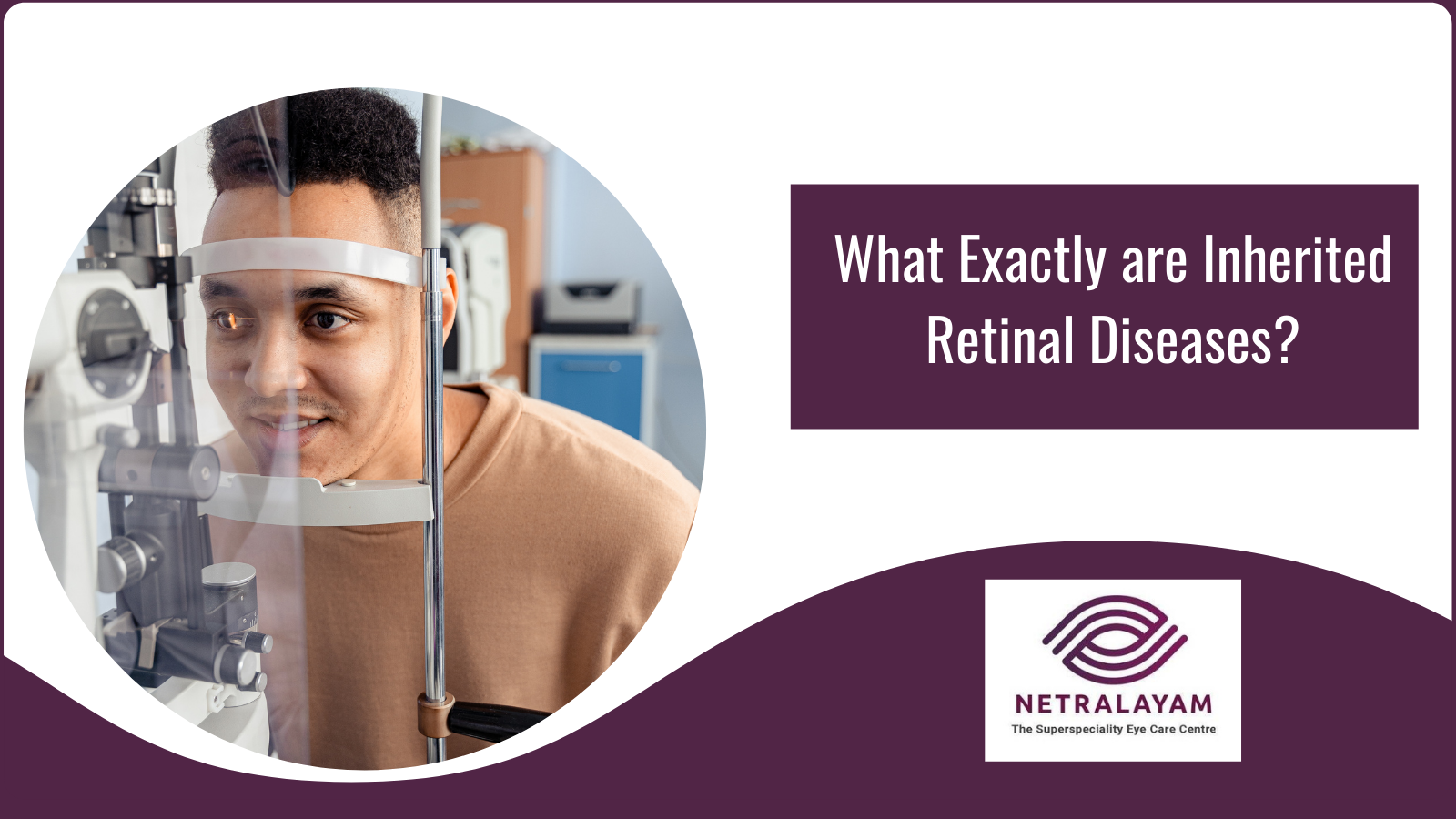Committed to Eye Care with Compassion, Technology and Competency
Committed to Eye Care with Compassion, Technology and Competency

2/13/2022
Inherited retinal diseases (IRDS) are a large group of clinically and genetically heterogeneous conditions that can cause severe vision loss or blindness. Such eye problems can progress at different rates and can affect people of all ages. Even though they are rare, the symptoms can worsen over time. In short, many of the inherited retinal diseases are degenerative.
The first symptoms generally occur during childhood. These may include intense sensitivity to light (photophobia) and blurred vision. These are later followed by loss of ability to see color, loss of peripheral vision, and blind spots in the center of vision.
There are more than 260 genes of varying kinds that are known to cause IRDS. Some gene mutations are more serious than others. Here, if there is a mistake in a gene, a protein may not be made correctly. This can lead to the degeneration of the retina, which can cause vision loss.
It is a type of eye disorder that generally affects the retina. It is one of the earliest forms of IRD. People who suffer from such a disorder have a severe visual impairment from the beginning of infancy.
Cones and rods are light-sensitive cells that are found in the retina. Cone-rod dystrophy (CRD) is a group of more than 30 IRDS that can affect cones and rods. People can experience loss of vision due to progressive deterioration of the cones and rods. In most cases, individuals can lose a significant amount of vision by mid-adulthood.
Also known as Stargardt macular dystrophy, this eye problem can cause damage to the macula (an oval yellowish area that surrounds the fovea near the center of the retina in the eye). It can cause central vision loss during childhood or adolescence. Only in rare cases do people lose full vision due to Stargardt disease.
It is a condition with progressive vision loss. The first symptom is generally night blindness. It can occur during early childhood, and over time, an individual can develop tunnel vision and lose the ability to see details. In choroideremia, the vision impairment can worsen with time, but the rate of worsening can vary among those who are affected by this condition. Furthermore, it can cause complete loss of vision by late adulthood.
It is a group of related eye disorders caused by variations in 60 genes that affect the retina. Vision loss occurs as the light-sensing cells of the retina slowly die off. The rate of progression and severity can vary from person to person, depending on the affected gene. Retinitis pigmentosa can occur during childhood or adulthood. It can cause blind spots in the peripheral vision, and over time, these blind spots can progress, which can hurt the peripheral vision.
See Also: What Are Some of the Most Common Retinal Diseases?
Such diseases result from variants in the DNA. These variants may be inherited from one or both parents. It can also occur spontaneously. Three types of patterns of inheritance can cause IRD:
It is crucial to understand the pattern so that the doctor can determine the type of IRD an individual may have and how it can be treated.
The main goal of gene therapy is to compensate for or correct the faulty gene. Compared to other body organs, the eye is small and easy to access for treatment. Furthermore, IRDS are strong candidates for gene therapy treatments.
You should know that gene therapy is not a cure for the disease rather a means to control the progression of the disease. The common approach is to deliver the normal gene to the retina using a vector (a modified virus that won’t cause structural damage). And compared to other treatments for retinal diseases where the patient needs direct injections as frequently as every three months, gene therapy treatment only requires one-time administration.
If you’re searching for the best eye hospital near me or an emergency eye hospital in Kolkata, we at Netralayam can provide you and your loved one with the best eye care services. Contact our medical team to know more.
Comments are closed
